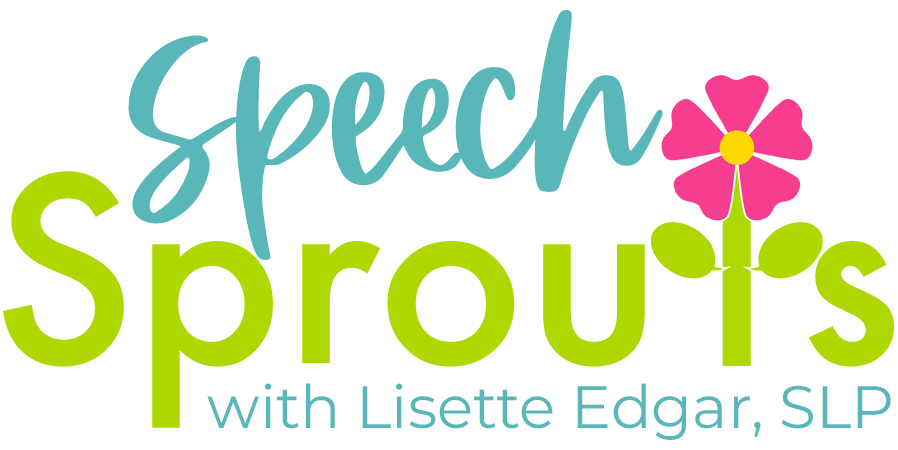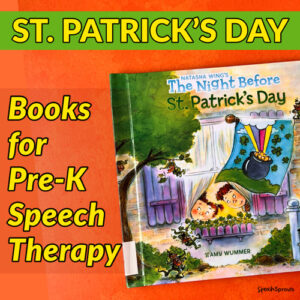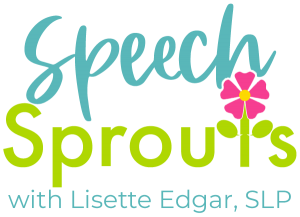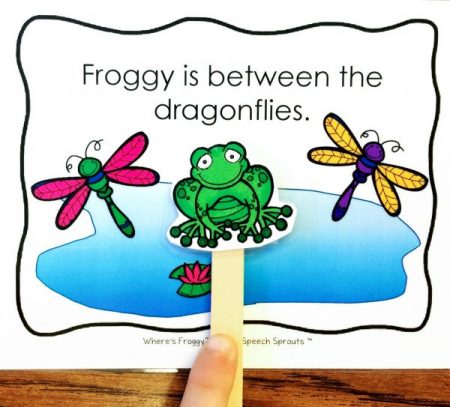
3 valuable insights that changed the way I assess and treat stuttering
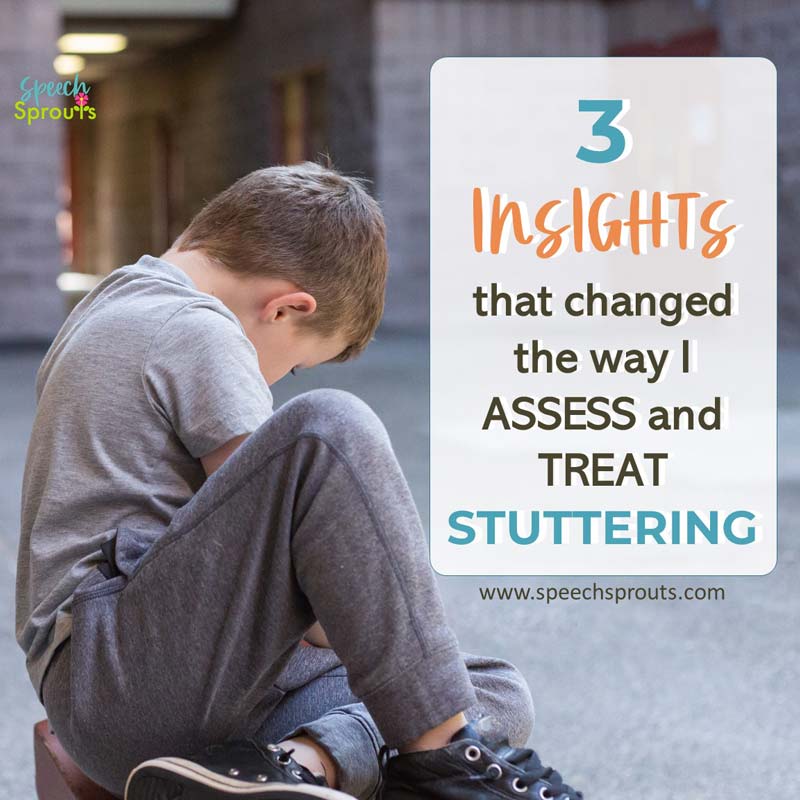
If you don’t feel the same level of confidence when you treat stuttering that you do treating other speech and language issues, you are not alone.
Unless we specialize in stuttering therapy, most SLPs just don’t see very many students who stutter and haven’t built up the same level of experience as other areas of speech and language.
Last month I enjoyed a workshop that covered stuttering assessment and treatment given by Dr. J. Scott Yaruss. If you ever have the opportunity to train with Dr. Yaruss, do it! I gained a fresh perspective and a few aha moments too.
Three points really stood out to me that will re-shape my thinking about stuttering assessment and how to treat stuttering
I want to share them with you, so let’s talk about stuttering assessment first.

Stuttering severity ratings don’t tell us much.
My district always wanted us to give quantitative measures that provide a score when we did a stuttering assessment.
Guess what? A frequency count and severity rating describe the overt nature of stuttering but don’t really provide us much insight about how stuttering is impacting a child, whether they’re ready for therapy or how to treat them. Why is that?
Stuttering doesn’t just affect a person’s speech.
When determining which students can benefit from therapy services, it’s important to look at the whole child, and how stuttering is affecting not only speech but other aspects of their life as well.
“Stuttering is more than just stuttering”
(Reardon-Reeves & Yaruss, 2013)
It’s important to gather information about a student’s thoughts, feelings, and personal reactions to their stuttering.
Consider multiple aspects of their experience:
- Is the student anxious about talking?
- How does the student feel about his/her speech?
- How does the student react?
- Is stuttering affecting the student’s willingness to participate in class?
- Talk to friends?
- Answer the phone?
- Is the student reluctant to join others on the playground?
- Have a conversation in the cafeteria?
Dr. Yaruss talked about two stuttering assessment tools that can help:
- Behavior Assessment Battery for School-Age Children Who Stutter (BAB; Brutten & Vanryckeghem, 2008) This assessment includes the Children’s Attitudes about Talking (CAT) te
- The Overall Assessment of the Speaker’s Experiences of Stuttering (OASES; Yaruss & Quesal, 2016) examines affective, behavioral, and cognitive reactions (and more) for ages 7-12 and 13-17
Not everyone who stutters needs therapy
Some individuals experience many stuttering moments when speaking, but are able to say what they want to say. Others may stutter less frequently, but it creates significant problems in their lives. This is particularly true for children who are reluctant to speak and “hide” their stuttering.
The takeaway: Don’t stop with a frequency count and severity rating when conducting a stuttering assessment. Severity doesn’t necessarily = negative impact. Dig deeper when assessing to determine personal impact and readiness for therapy.

We all stutter sometimes, right? Nope.
I know well-meaning SLPs feel it helps a child who stutters to hear that “we all stutter sometimes.” It’s an effort to build a student’s confidence. I’ve said it myself to more than one student, but no more.
We’ve come to understand that statement just isn’t accurate. Stuttering is no longer considered to be on a continuum that begins with “normal” disfluencies.
Non-stuttered disfluencies are different from the experience of a child who stutters.
Most people may trip over their words and repeat themselves occasionally. However, if you don’t stutter, you haven’t experienced being “stuck”, knowing exactly what you want to say, but being unable to move forward with your speech. Stuttering is a loss of control.
Losing control is no fun. The fear of losing control can negatively impact a child who stutters.
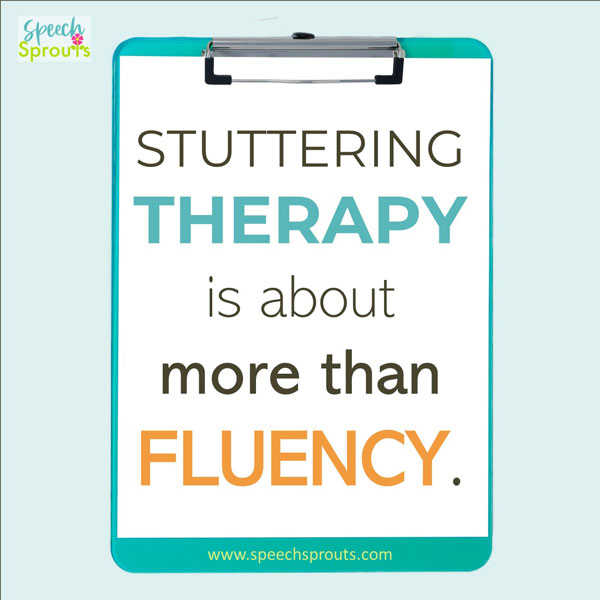
Stuttering therapy is about so much more than fluency.
What? Wait… isn’t our goal to help our students speak fluently? Actually, that may not be the goal at all when we treat stuttering. As clinicians, I believe our main goal is to help our students become confident communicators.
Dr. Yaruss put it this way: “The goal is not fluency itself…”
“The goal is for your student to be able to say what they want to say.”
That’s it. I think that’s a powerful mindset for serving our students well.
Let’s talk a little more about that. Many of our students will experience stuttering throughout their lives. We really can’t “fix” a neurologically-based disorder, and that includes stuttering.
So does that mean we don’t teach fluency techniques and strategies? No, but fluency strategies are not the main focus. They’re just one tool in the toolbox for the individual who stutters.
So what do I focus on?
There’s a lot of work to be done before teaching about fluency strategies.
- Learn about speaking. Teach students about how the body parts used during speech (and stuttering) function or their “speech machine.”
- Learn about stuttering. Learn about muscle tension, the different types of disfluencies, and play with it! Where do you feel the tension?
- Try some stutters on purpose and explore them. Long and short ones, bouncy and stuck ones, quiet and loud ones. I like to demonstrate them and have the child “catch me” and analyze my stutter too.
- Work on reducing negative reactions to stuttering by working on “normalizing” stuttering. Teach that sometimes stuttering will happen. and you know what? It’s okay to stutter. It’s just one way of speaking. This can take time!
- Do some systematic desensitization with voluntary stuttering or “pseudostuttering”, beginning with identifying and trying speaking situations that are the most comfortable for the child who stutters and working up to trying pseudostuttering in situations that the child is more fearful of.
When the child who stutters is ready to learn fluency strategies, it’s not necessary to teach all of them.
Choose 1-2 that seem to work well for your student and practice those.
Utilizing a fluency strategy isn’t a natural way of speaking, and really doesn’t generalize. Fluency strategies are just tools to employ when the child feels the need to be more fluent.
The takeaway: It’s essential that you teach the foundation before you teach fluency-enhancing techniques. Your student needs to understand the moment of stuttering before she can change the moment of stuttering.
More posts about stuttering assessment, how to treat stuttering and tips for teachers.
Read more about the OASES™ in my review post: The OASES Stuttering Test – How to Capture More Than Disfluencies.
What Teachers Need To Know About Stuttering -A guest post on Minds in Bloom
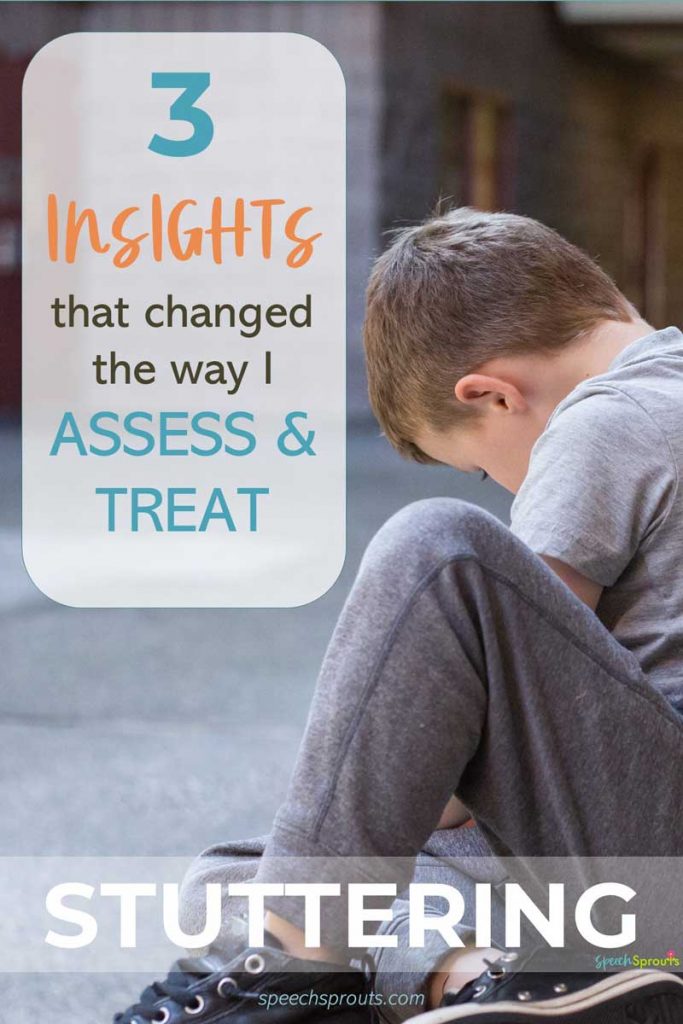
Check out Stuttering Therapy Resources with Nina Reeves and Dr. Scott Yaruss on social media for more great info about stuttering:
You’ll find many helpful free resources on their Stuttering Therapy Resources website.
Finally, be sure to join my newsletter for notice of new posts so you don’t miss anything! Just look for the blue box in the sidebar, sign up and I’ll send you a freebie too.
See you soon,

Share it:
- Read more about: Stuttering
